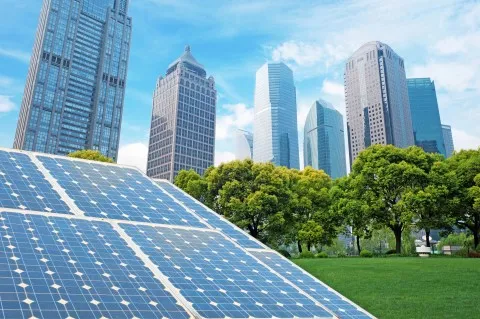
COVID-19-led delays loom for solar panel deliveries
Developers waiting for their modules from China in March and April could get hit by the delays.
The Chinese government’s measures to control the spread of the COVID-19, which include restricting movement and extending the Lunar New Year holiday, will put constraints on the global solar module supply chain, according to an analysis by Wood Mackenzie.
Xiaojing Sun, senior research analyst with Wood Mackenzie’s energy transition research team, said, “At present, solar manufacturers may not be able to resume production until 10 February at the earliest. It is unclear how soon the travel controls will be lifted. If they remain in place, production from Chinese manufacturers will be reduced.”
“Although factories located in mainland China will feel the worst adverse impact, overseas module assembly facilities that rely on imports from China for frames, backsheets, and junction boxes will also be negatively affected.
“Module production in Southeast Asia and the US usually carry one to two months of supplementary material inventory on-site. If the production interruption in mainland China lasts longer than one month, factories in Southeast Asia and the US will start to see supply shortages that will reduce their production output.”
Sun said that China produces the majority of the global industry’s modules, meaning any potential strain could have an impact farther afield.
“Developers waiting for module delivery from mainland China in March and April will not see their orders delivered on time,” she said. “Deliveries due late in the second quarter of 2020 are also likely to be delayed. Late module delivery will affect project construction schedules around the world, and projects with Q3 and Q4 2020 placed-in-service dates are likely to be hit particularly hard.”
Vietnam, Malaysia, and the Philippines all imposed visa restrictions on visitors from China, including Chinese workers and management staff at solar manufacturing facilities in those countries. This will affect the production of many Chinese module makers’ subsidiaries in Southeast Asia, lowering the total module output.
Sun said, “The supply interruption also means that potential price inflation may come earlier. Wood Mackenzie had forecast that module oversupply would depress prices this year. Delays in China, depending on their duration, would soften any price dip. If activity is restored by the end of February, the impact is likely to be short-term.
“However, if restrictions remain in place longer, then the impact on supply in China will be significant, choking the country’s output. The longer strict public health measures stay in place, the more likely it is that prices will be pushed higher in the second half of 2020.”













 Advertise
Advertise











